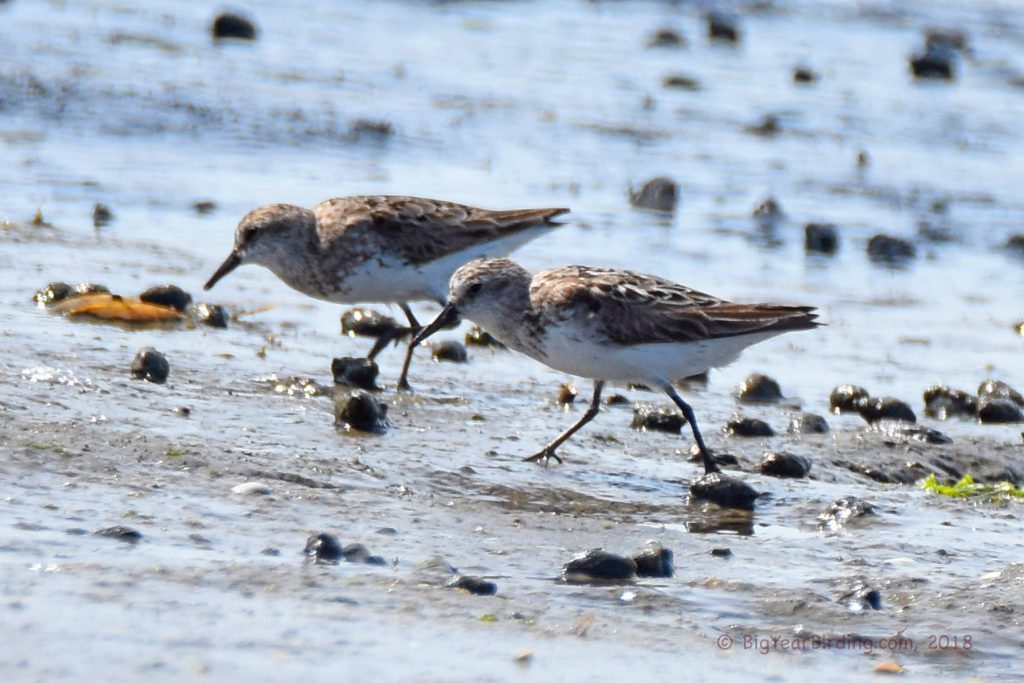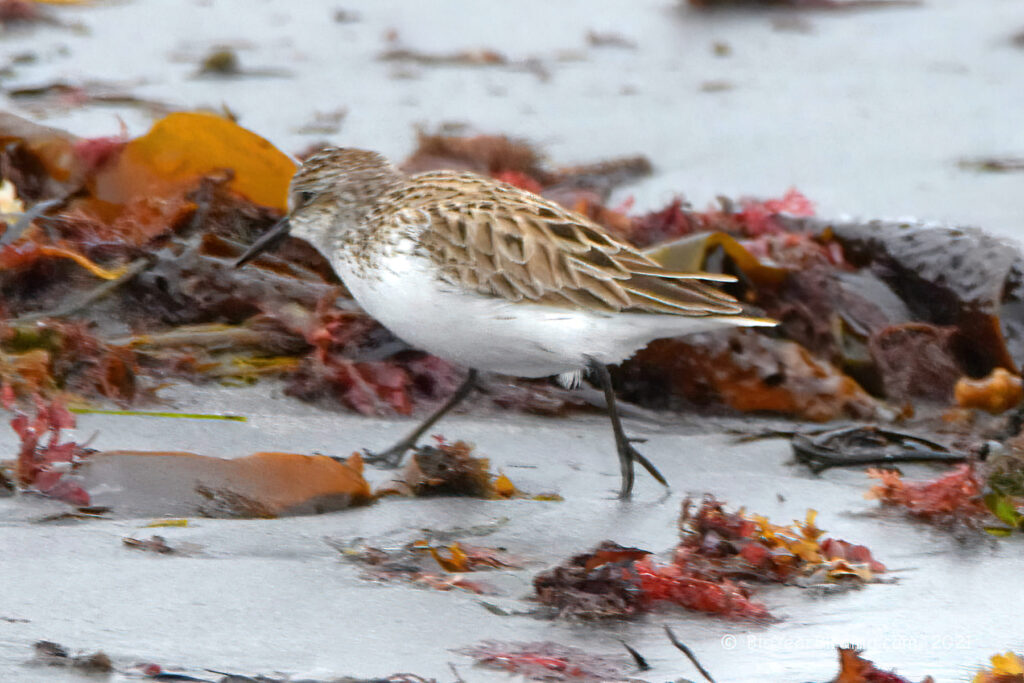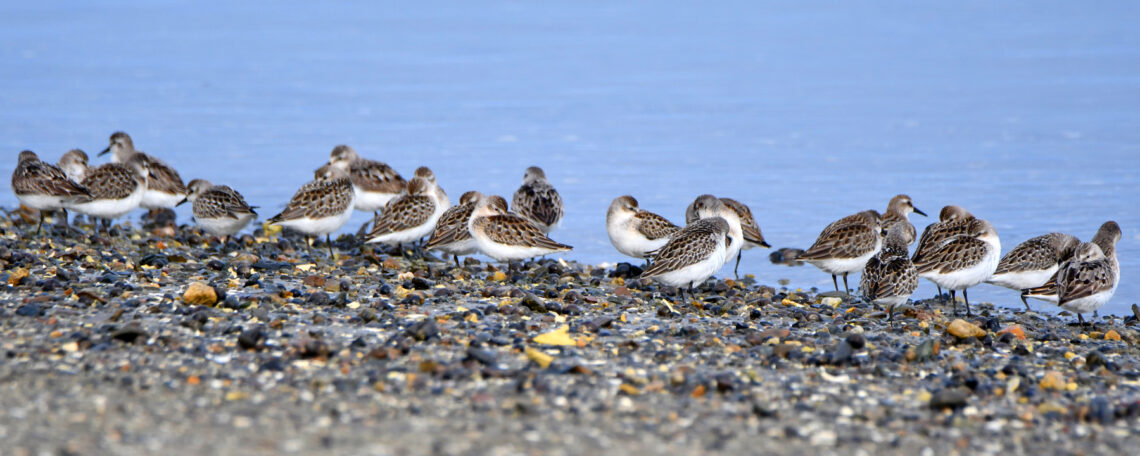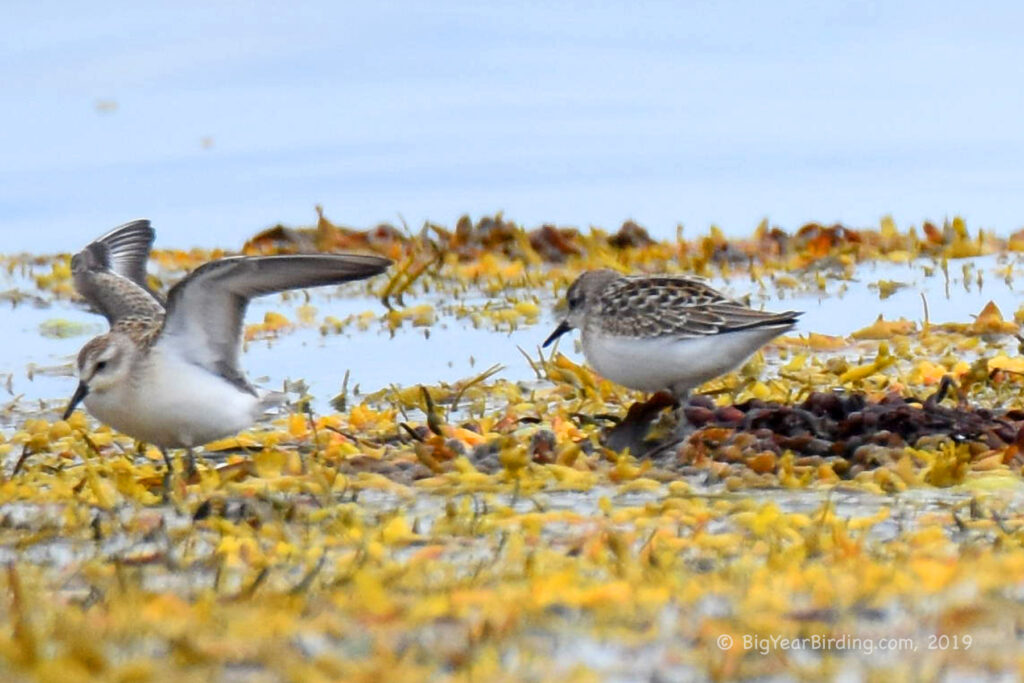
The Semipalmated Sandpiper is a small shorebird that can be found in North America during the summer months. They measure between 6-7 inches in length and have a wingspan of about 14 inches. They weigh around 1-1.5 ounces, making them one of the lighter shorebird species.

One of the most distinguishing field marks of the Semipalmated Sandpiper is its black legs and short, straight bill. During breeding season, adults have a reddish-brown back with black speckles, while their underparts are white with gray streaking. During non-breeding season, they lose their reddish-brown color and become a more uniform gray-brown color with white underparts.
Semipalmated Sandpipers breed in the Arctic regions of Canada and Alaska and migrate south to the coasts of Central and South America during the winter months. They are known to make an incredible non-stop flight of up to 2,500 miles from the Bay of Fundy in Canada to South America. They are also one of the most common shorebirds to migrate through the East Coast of North America.
The Semipalmated Sandpiper is a highly social bird that can often be seen in flocks during migration. They feed on small invertebrates such as crustaceans, insects, and worms, which they find by probing into the sand or mud with their bills.

Although the Semipalmated Sandpiper is not currently considered threatened or endangered, its population has declined in recent years due to habitat loss and degradation, as well as climate change. Conservation efforts are underway to protect critical breeding and stopover habitats and to monitor their populations to ensure their continued survival.

